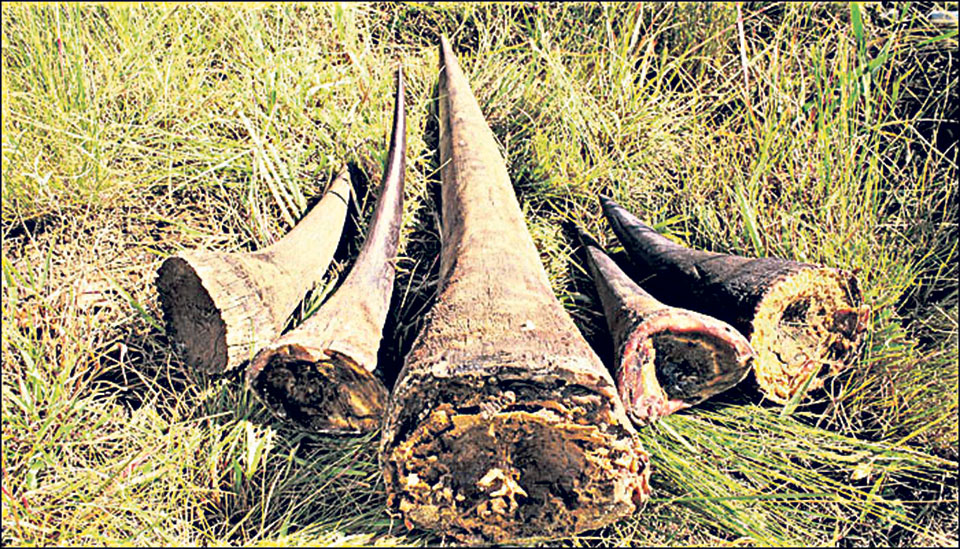
Nepal covers only 0.03 percent of the global land area and 0.3 percent of Asia. But it posses a disproportionately rich diversity of flora and fauna. The land elevation of the country varies from 60 meters above sea level in the south to 8848 meters in the north.
According to Bird Conservation Nepal (BCN), 876 species of birds have been recorded in Nepal so far, which is about 8 percent of the total bird species found worldwide. The annual report 2072 B.S. of Department of National Parks and Wildlife Conservation (DNPWC) shows that 210 species of mammals, 653 species of butterfly, 230 species of fish, 53 species of amphibians, 137 species of reptiles, and 6973 species of flowering plants are found in Nepal.
The Government of Nepal has taken the rich diversity as a magnificent gift of nature and has been conducting different conservation activities in collaboration with national and international organizations. However, due to lack of people's participation, incomplete legal procedure, and negligence of concerned authorities, these conservation activities have not been effective. On the other hand, the high value and demand of wildlife and their illegal trade in international markets have remained our serious challenges.
Wildlife trade has been the second-biggest direct threat to species after habitat destruction. Experts at TRAFFIC, the wildlife trade monitoring network, estimate that wildlife trade runs into hundreds of millions of dollars. TRAFFIC has calculated the wildlife products worth about 160 US billion dollars that were imported across the world each year during 1990s. This figure has been increased these days.
Many plants & animals are sold as food, pets, ornamental plants, and medicine. Over-exploitation of these activities may lead to the imbalance in nature and biodiversity. In our country, most of the wildlife hunting and trade is done by educated people. The ethnicity of arrests published by Wildlife Conservation Nepal (WCN) from 2005 to 2016 shows that 44 percent of the Matuwalis, 23 percent Bahun/Chhetri, 8 percent Newar, 6 percent Madhesi, 5 percent foreigners and 10 percent others were found to be involved in wildlife hunting and trade. This has been a lucrative business in Nepal. Mostly, people of the age group 20-40 are found actively involved in these kinds of activities. Involvement of more than 8 people -- shooter, runner, arms provider, market finder or broker and store keeper -- has made hunting and trading easy.
Illegal hunting and trade of tiger, red panda, pangolins, leopard, deer, elephant, owl, Himalayan yew (lauth salla), caterpillar fungus (yarshagumba), marsh orchids (panch aaunle), red sanders (raktachandan) are emerging these days. The trade of red panda hides, leopard and deer skins, pangolin scales, musk pods, bear bile, tiger bones and skin, bird feathers, otter skin, rhino horns, and elephant ivories are sold at high price.
International drug smugglers were found to be using Kathmandu as a transit for smuggling wildlife body parts. Political patronage to the poachers and smugglers has made this issue more complex and challenging for conservationists. WCN reported that 74 percent of wildlife hunting and trade is found to be in Chitwan district followed by Nawalparasi (8 percent), Makawanpur (8 percent) and others 10 percent.
National legislation and appropriate penalties for illegal wildlife trade are missing in the country. Concerning the illegal wildlife hunting and trade, it's our prime duty to aware the local people, motivate the conservationists, and pressurize the government and concerned authorities. Strict laws and security system should be maintained in national parks, wildlife reserves, and conservation area. Conservation has also progressed nowadays by the use of new technologies like aerial surveillance, drones and spy dog. Illegal hunting and trade has been a real threat to wildlife. As, wildlife and their habitat can’t speak, we must all unite together with a common aim to protect them. If we are united, we will succeed.
Thapa is studying Bachelor's in Forestry at IOF, Pokhara.


Leave A Comment